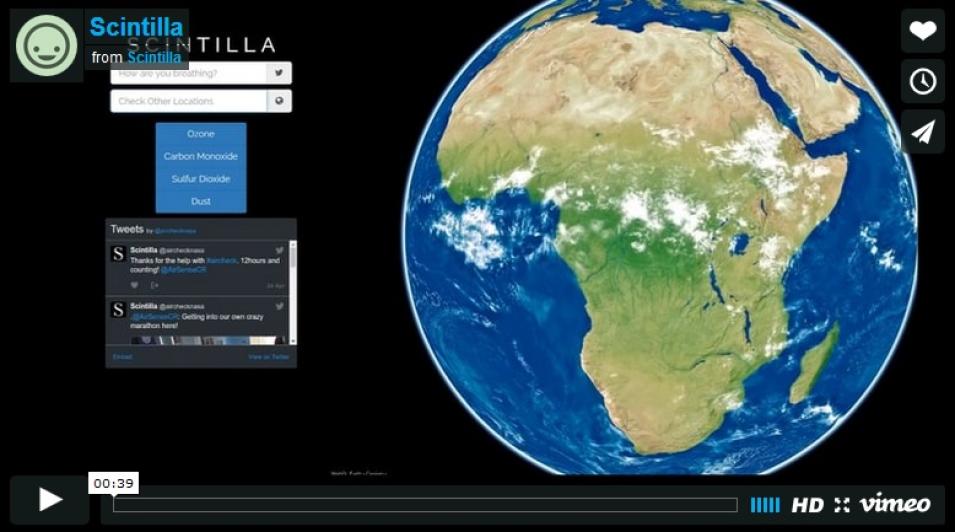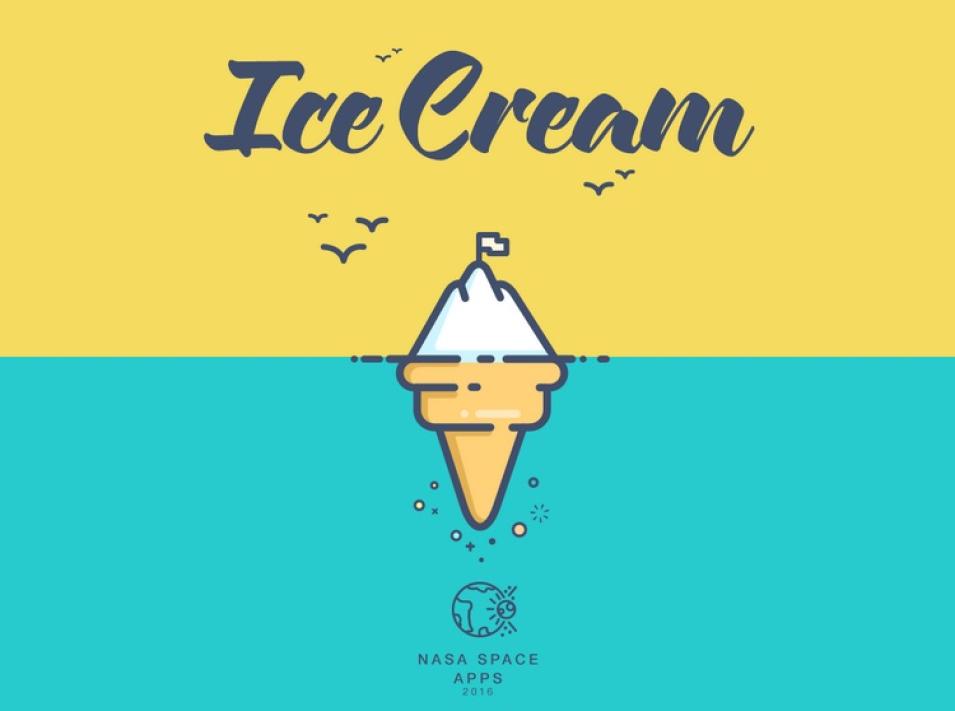Two responses to challenges posed by NASA’s Global Imagery Browse Services (GIBS) in the 2016 NASA Space Apps Challenge were selected as Global Winners. The winning entries, Scintilla and L.I.V.E. Glacier Project (Ice Cream Team), were among the 1,287 projects developed by teams around the world as part of the Space Apps Challenge 48-hour hackathon April 22-24.
The goal of the annual NASA Space Apps Challenge is for teams to collaboratively develop open-source solutions to address global needs applicable to both life on Earth and life in space. GIBS is a key service of NASA’s Earth Observing System Data and Information System (EOSDIS), and provides visualizations of NASA Earth observing satellite data. GIBS data can be viewed using the EOSDIS Worldview interactive interface and similar clients.
The three challenges posed by GIBS in this year’s competition were:
- Aircheck (#Aircheck): Develop an app incorporating GIBS atmospheric imagery to help crowdsource information about changes in environmental factors such as high temperature, pollen and allergens, or poor air quality that could cause physical problems;
- Earth Live (#EarthLive): Develop a web tool, mobile device app, or add-on for an existing app or website leveraging NASA imagery and climate data to illustrate and evaluate Earth changes over time, such as comparing long-term satellite data or looking at before and after images of changes caused by storms and other natural events; and
- Sea Ice App (#SeaIceAlaska): Develop an app to help track sea ice conditions in Alaska that does not require mobile network access for data collection.
Aircheck resulted in 101 projects from 67 worldwide locations; Earth Live garnered 83 projects from 44 worldwide locations; and Sea Ice App received 22 projects from 19 worldwide locations.

